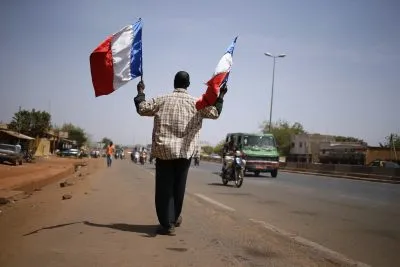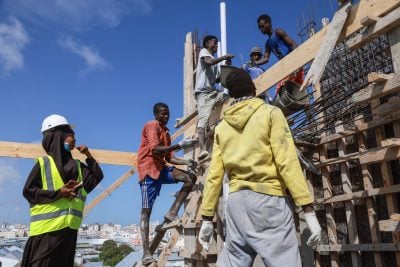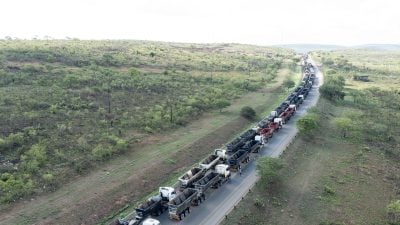The Economic Development Board (EDB) is a Mauritian government body created in 2018 responsible for ensuring greater coherence and effectiveness in implementing policies and drawing up the vision for economic development. Its CEO, Ken Poonoosamy, spoke to African Business about the sectors the country is developing, its international partnerships and the development of its green economy.
African Business: Mauritius used to be heavily dependent on sugar, but today has tourism, financial services and manufacturing. What are the new sectors that Mauritius is trying to develop today?
Ken Poonoosamy: Mauritius indeed has built a solid reputation as a recognised international player in several sectors as the country continuously engaged in an economic diversification agenda to avoid the risks we faced as a mono-crop economy at the whims of climate changes and other shocks.
The Mauritian economic landscape is a much more diversified one than we had in the late 1960s with tourism, financial services and export-oriented manufacturing, especially with regards to textile and apparels and the seafood industry having become major contributors to national output.
The strategy today is two-fold. First, we are looking at consolidation and diversification within the established sectors of activity, and second, we aim at furthering the development of new economic pillars.
Within the traditional sectors, building on the know-how we have developed over several decades, we aim at attracting investments in high-tech manufacturing, medical devices, pharmaceutical products and technical textiles among others. Several incentives have been put in place to this effect.
Furthermore, we are constantly working towards adding more products to our existing range of financial instruments to improve the competitiveness of the Mauritius International Financial Centre. In addition, we are trying to develop a fintech ecosystem which will be a natural extension of the financial services industry.
In parallel, we are determined to establish new sectors as major contributors to GDP and wealth. The ocean economy, medical research, biotechnology, the digital industry and positioning Mauritius as a knowledge hub are high on the agenda.
We have recently signed a series of trade agreements with India, China and Africa which will increase our market size. Moreover, we have developed an Africa Strategy that relies on three legs, which are to position Mauritius as a gateway for investments into the continent, attracting manufacturers to operate and export from Mauritius to Africa and finally, we are setting up Special Economic Zones in several African countries to allow operators to engage in larger scale production and be closer to both raw materials and markets.
Mauritius traditionally has had strong trade links with India and Africa. How do you balance your international partnerships?
These partnerships we believe are complementary, and Mauritius has an important role to play as the bridge between countries and continents.
Mauritius and India, for instance, share strong historical ties, both on a trade and cultural basis. Last year, Mauritius imported goods worth Rs15bn [$348m] from India and the latter was ranked as the third major supplier of goods for Mauritius. In 2020, India represented 10% of Mauritius’s total imports of merchandise trade which consisted mainly of petroleum products, rice, meat, medicaments, and seafood products.
Moreover, India is the major supplier of petroleum products to Mauritius and provides the country with its raw materials for its textile industry namely cotton, fabrics and textile accessories. As regards to the exports side, Mauritius has exported goods worth Rs1.2bn [$28m] to India in 2020 with the main commodities being medical devices, vanilla beans, fish meal, shirts and trousers, among others.
In order to strengthen this bilateral connection between the two countries, both sides agreed to sign a Comprehensive Economic Cooperation and Partnership Agreement (CECPA) in February 2021 which came into force on 1 April 2021. The CECPA is the first trade agreement signed by India with a country in Africa.
Bilateral trade with Europe is undertaken under the Economic Partnership Agreement (EPA) and countries like France, the UK, Belgium, Italy and the Netherlands have been strategic in increasing our exports to Europe over the years. Strong bilateral ties between Mauritius and Europe have allowed the country to export its main products to the European continent such as sugar, garments, processed fish and jewellery.
Even with Brexit, we have managed to secure our preferential access to the UK by signing a bilateral agreement with the UK which entered into force on 1 January 2021 when the UK exited the European Union.
Finally, the entry into force of the African Continental Free Trade Agreement in January 2021, which covers preferential trade for both goods and services between all 55 African countries, leads us to a win-win strategy, with economic benefits accruing to investors in Mauritius.
What is your China strategy?
Mauritius quickly identified the need to partner with China. The Free Trade Agreement (FTA) between China and Mauritius was signed in October 2019. It is the first FTA that China has signed with an African country. The FTA came into operation on 1 January 2021. Mauritius has benefited from immediate duty-free access to the Chinese market on some 7,000 tariff lines. The China-Mauritius FTA is the 17th FTA signed by China as well as the first between China and a country in the African continent.
A higher volume of trade flows between China and Mauritius is possible and should be encouraged. The appropriate structures have been put in place to identify impediments to trade with the objective to eliminate them. The historical and cultural ties as well as close economic cooperation between the two countries could serve as a strong basis to increase the level of trade and investment within the next few years following the FTA.
Tariffs applicable to two-way trade have been eliminated for most products, except for a narrow range of highly sensitive items in Mauritius given the huge trade imbalance and the level of asymmetry in the two economies. For Mauritius, the FTA with China is the first trade agreement with a country in East Asia and could serve as a strong link to connect Mauritius to one of the world’s most dynamic emerging economies and to the broader Asian continent.

Climate change, the blue economy and biodiversity are crucial for island states. How will you develop these areas?
As a Small Island Developing State (SIDS), Mauritius is highly vulnerable to the effects of climate change and its adverse impacts on socio-economic development.
In fact, the green energy industry has been proposed as a new pillar of economic growth with the government aiming to have 60% of its energy generation from green sources and for the use of coal to be phased out by 2030.
In addition to environmental benefits, there are substantial economic gains to be earned by moving towards renewable and green energy. At present, the fuel imports represent more than 15% of the island’s import bill and this is likely to rise further with the increase in fuel costs and freight costs around the world due to the Covid-19 pandemic. A reduction in dependency on imported fossil fuels will lead to a reduction in the related foreign currency outflow and improve the current account balance.
One of the flagship measures announced is the implementation of the Biomass Framework with a guaranteed price for bagasse. It will encourage more landowners to engage in cultivation of cane for production of renewable energy from biomass, increase the return from cane and support small planters. Moreover, the additional investment in plants and machinery required to make electricity will increase capital stock and employment, and subsequently GDP growth.
Want to continue reading? Subscribe today.
You've read all your free articles for this month! Subscribe now to enjoy full access to our content.
Digital Monthly
£8.00 / month
Receive full unlimited access to our articles, opinions, podcasts and more.
Digital Yearly
£70.00 / year
Our best value offer - save £26 and gain access to all of our digital content for an entire year!
 Sign in with Google
Sign in with Google 



